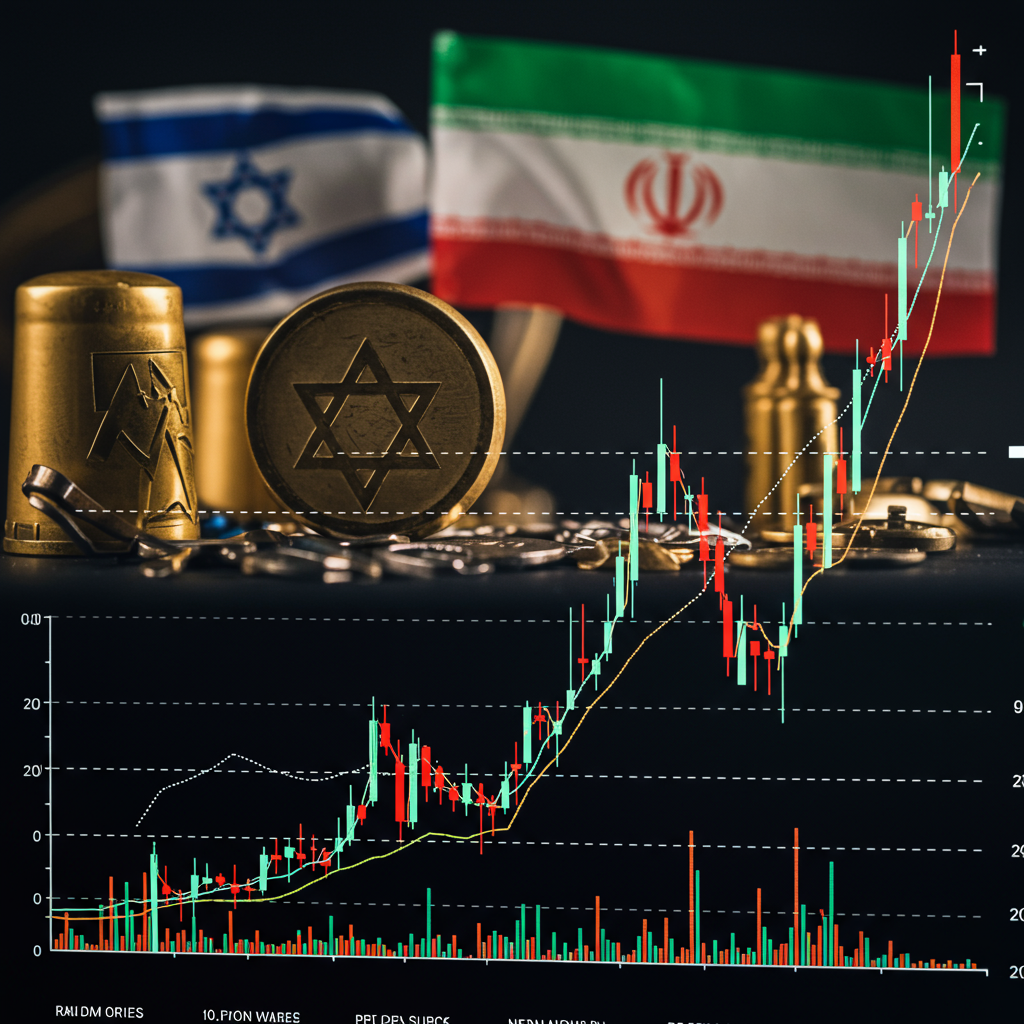Global oil markets are facing significant volatility as analysts struggle to predict the full impact of escalating tensions between Israel and Iran. The recent surge in conflict has introduced a “blanket of unease” into energy markets, making future price movements incredibly uncertain.
Geopolitical Risk Fuels Market Anxiety
Following a period of heightened hostilities, including reported attacks on military and energy infrastructure from both sides, market watchers are grappling with a complex risk landscape. A key concern is the potential for direct involvement by global powers, particularly the United States, which has historically maintained a strong stance against Iran. High-level political discourse has underlined a commitment to preventing Iran from acquiring nuclear weapons and rolling back its regional influence, previously including a “maximum pressure” policy aimed at driving Iranian oil exports towards zero. Such dynamics heighten fears of actions that could disrupt global energy supply.
Supply Chokeholds Under Threat
The most critical supply risk lies with vital shipping lanes. Energy markets are closely monitoring the possibility of major disruptions, especially a worst-case scenario involving Iran attempting to block the strategically crucial Strait of Hormuz. This narrow passage is a chokepoint linking the Persian Gulf, a major source of the world’s oil, to the open ocean. Any significant impediment here could send shockwaves through global supply chains.
Beyond transit routes, direct attacks on energy facilities also pose a threat. Recent reports indicate damage to Israel’s Bazan oil refinery complex and a partial suspension of production at the shared Iran-Qatar South Pars gas field following an Israeli airstrike. While the full extent of this damage and its impact on overall production remain under assessment, these incidents underscore the vulnerability of critical energy infrastructure in the conflict zone.
Analyst Outlooks: A “Guessing Game”
Analysts admit they are largely in the dark regarding the duration and intensity of the conflict’s market influence. As one oil broker noted, “Your guess is as good as mine” when it comes to predicting future prices. The situation is as fluid as the commodity itself, leaving many market participants in a defensive posture.
Leaders from major oil companies like TotalEnergies, Shell, and EnQuest have publicly warned that further assaults on energy infrastructure could have severe consequences for global supply and prices.
Despite the rising tensions and recent price jumps, oil prices were trading mixed midweek. International benchmark Brent crude futures hovered near $76 per barrel, while U.S. West Texas Intermediate (WTI) futures traded flat around $74 per barrel.
Conflicting Signals on Price Trajectory
Prior to this escalation, some analysts believed the market was heading towards a significant price reset, potentially falling to $30-$50 per barrel due to ample supply growth from OPEC and non-OPEC producers combined with softer demand. Paradoxically, the current conflict could make that lower outcome more likely after the fighting subsides, as producers maximize output now while prices hold a risk premium.
Currently, analysts estimate there’s roughly a $10 per barrel risk premium embedded in oil prices, reflecting minor interruptions to Iranian exports and tanker loadings.
However, others paint a far bleaker picture for the immediate term. Some veteran market observers warn that the current situation represents the most significant threat to oil markets since the 1990 Iraq invasion of Kuwait, potentially even surpassing the impact of the 1974 Arab oil embargo.
While markets may appear to be stabilizing momentarily, they are seen as highly sensitive to the next major headline. Some analysts believe that dismissing the potential for substantially higher oil prices currently is “trading on hope and not reality.” Forecasts suggest a roughly 5% chance of prices exceeding $103 per barrel within weeks if the conflict intensifies significantly, with longer odds on crude soaring towards $160 per barrel by late summer if Persian Gulf flows face serious, prolonged disruption.
The path forward for oil prices remains shrouded in uncertainty, directly tied to the unpredictable trajectory of the Israel-Iran conflict and the broader geopolitical landscape.



